Collections
Listed below are the collections that are a part of the John G. Riley Center & Museum's Digital Archive.
-
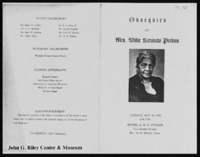
Obituaries & Obsequies Collection
Funeral programs and obituaries are a great source for information. They can reveal birth dates, occupations, family history, if the individual belonged to any group or organization, the level of education, socioeconomic wealth, culture, and religion of individuals. This collection contains hundreds of funeral programs and obituaries. The majority of the programs belong to individuals who were members of the Tallahassee community. The programs date as far back as the 1800s and go into 2017. -
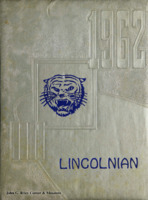
Phillip J. Nelson Collection
-
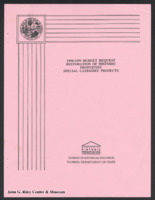
Historic Preservation Collection
-
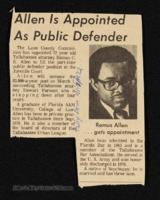
Tallahassee Black Families Collection
Tallahassee was founded in 1825 and selected as the capital because of its location, which was the halfway point between Pensacola and St. Augustine. The city depended on a plantation economy, which was fueled by slave labor; as a result, by 1860, the Black population grew to three times the size of the White population. The descendants would create a rich and unique history in Tallahassee, which this collection has recorded and preserved. The collection contains the Mr. & Mrs. Levi Simmons Papers, Martin Family Papers, Pasty Miller Papers, Benjamin J. Baker Papers, Robert Meacham, Jack Jefferson Papers, Davis and Pemberton Family Reunion Program, Katherine Nickelson Spieghts Collection, Martha Brown Collection, Dr. Alpha Omega Campbell, Lewis Washington Taylor, Cherrye L. Turner Spencer, The Gardner Family History, The Hall family of Leon County, Rev. Bernyce H. Clausell History, and Charles Henry Rollins History. -

Vivian D. Kelly Collection
-
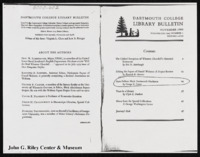
Florida Black School Houses Collection
-
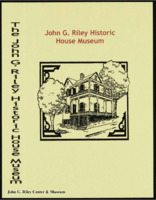
John G. Riley House Museum & Center Collection
The John G. Riley House was built in 1890 at 419 East Jefferson Street, Tallahassee, Florida. After Riley’s death, his family continued to live there until 1973. The city bought the property and planned to build an electrical substation on the site. The Historic Tallahassee Preservation Board researched the site and in 1978 the house was added to the National Register of Historic Places. The house now serves as a museum/center in his honor. The mission of the museum is to preserve the cultural and educational history for African Americans in the Tallahassee area and the state of Florida, from Reconstruction era through the Civil War rights movements. The collection contains information concerning the development of the John G. Riley House Museum & Center as well as the day-to-day legwork of the museum & center. The files range from program information to displays to grants. -
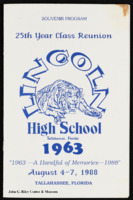
(First) Lincoln High School Collection
Old, or First, Lincoln High School was established in 1869 in Tallahassee, Florida, to educate the newly freed slaves. The school was named after Abraham Lincoln. The collection documents the history of First Lincoln High School, containing programs, yearbooks, photographs, newspaper clippings, commencement programs, school programs, and programs between Lincoln High School, Florida Agricultural and Mechanical High School, and Griffin High School. -
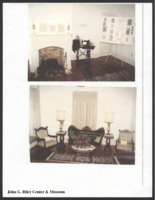
John G. Riley Collection
John G. Riley was born on September 24, 1857 in Leon County to the union of Sarah and James Riley. Born an enslaved African, Riley grew up in “slave quarters” located behind the Knott House in downtown Tallahassee. It is believed that Riley was self-educated, but further research shows Professor Riley did study at colleges and universities. Professor Riley went on to teach in Wakulla, Gadsden, and Leon counties in Florida as well as serving as principal to Lincoln Academy in Tallahassee. In addition to being a distinguished educator, Professor Riley was also a successful businessman. After building his home on East Jefferson Street in Tallahassee, Professor Riley began to buy and sell property in the capital city. His business dealings would yield profits for years after his death. The collection contains a biographical history of John G. Riley. This includes a brief history of property records, family genealogies, and a 1915 copy of Who’s Who, which cites Professor Riley. -
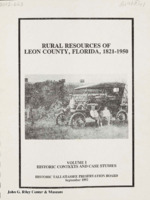
Historic Leon County Collection
Leon County is in the northernmost region of Florida known as the Big Bend. The collection contains copies of Rural Resources of Leon County, Florida, 1821–1950: Volume I Historic Contexts and Case Studies, by Historic Tallahassee Preservation Board. The case studies give a brief history of Leon County through case studies done on the families that were in Leon County between 1821–1950. The collection also contains the September 1989 Proposed Historic Preservation Ordinance and Incentive Program for Tallahassee and Leon County by the Historic Preservation Task Force. The book is Tallahassee/Leon County’s plan to ensure historic preservation of the city and county. -
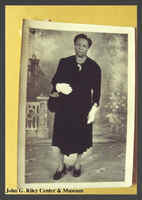
Families Collection
-
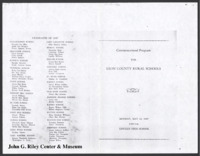
Leon County Schools Collection
The collection follows the history of Leon County Schools through segregation and integration and the development of new schools. The collection focuses on rural one-room schools of Leon County. The collection contains information concerning Leon County rural one-room school houses from attendance records to commencement exercises. The collection also tracks the education system for blacks in Leon County through segregation and integration. Brief histories are given for some schools.
